
How to Sleep While Sitting Up in a Chair? Quick Tips
Table of Contents
Sometimes, sleeping in a chair is unavoidable. Whether you’re on a long-haul flight, pulling an all-nighter at the office, or recovering from surgery, knowing how to sleep in a chair comfortably can make a huge difference. However, getting quality rest while sitting up can be tricky without the right setup.
If you find yourself needing to sleep in an office chair or any other upright seating arrangement, this guide will walk you through the best strategies for making it as comfortable as possible. From choosing the right chair to adjusting your posture and using extra support, we’ll cover everything you need to know.
Why You May Want to Sleep in Your Chair
We rarely choose to be in this situation where we need to know how to sleep sitting up: our bed broke down, we've moved recently, or we're awaiting our new bed. It is simple if you want to buy a bed for your home office, but if you want to buy one for your regular workplace, it may be more difficult. The human body is designed to sleep lying down, so there are two reasons to consider sleeping vertically. A chair can be useful for sleeping in this situation.
- When you do not have a bed and do not like to sleep on the ground because you do not have a bed.
- Medical conditions, whether temporary or chronic
Some medical reasons can be more serious and are medical. There may be cold symptoms or allergies giving you trouble while lying down, and the congestion prevents you from breathing. Some medical procedures, such as cataract surgery or facial surgery, can make horizontal sleeping dangerous or even impossible. As a result, you need to make alternative arrangements for sleeping in such circumstances.
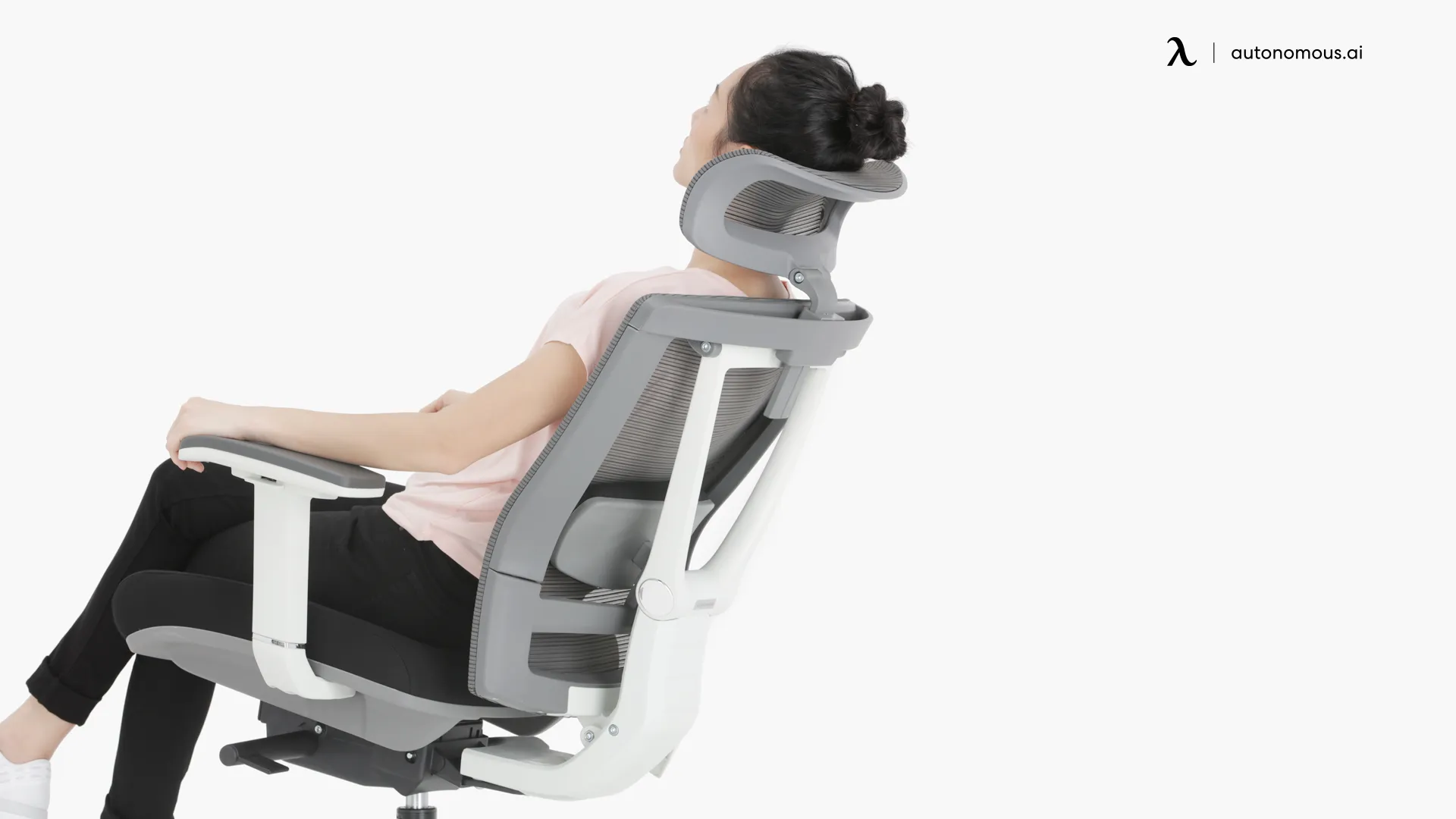
Why Sleeping in Your Chair is so Difficult
You don't have to worry about sleeping on a chair or is it bad to sleep sitting up. The natural signals and cues your body sends to tell you when it is time to wake up or fall back asleep when you are sleeping. There are also instances when your brain can recognize that you are rested without being fully in control of your muscles, which can prevent some types of pain.
The only problem is that you do not have a recliner chair to let you take a comfortable nap. Moreover, your back and neck may be sore the next morning because your body isn't stretched out naturally. If you sit on your chair for a standing desk and rest your head on the table, you are bending your back at a 90-degree angle, which is harmful to your lower back.
You can develop numbness in your legs if you have been seated for a long period. Some office workers prefer to take shorter naps or breaks on their chairs but seldom get enough sleep to function efficiently.
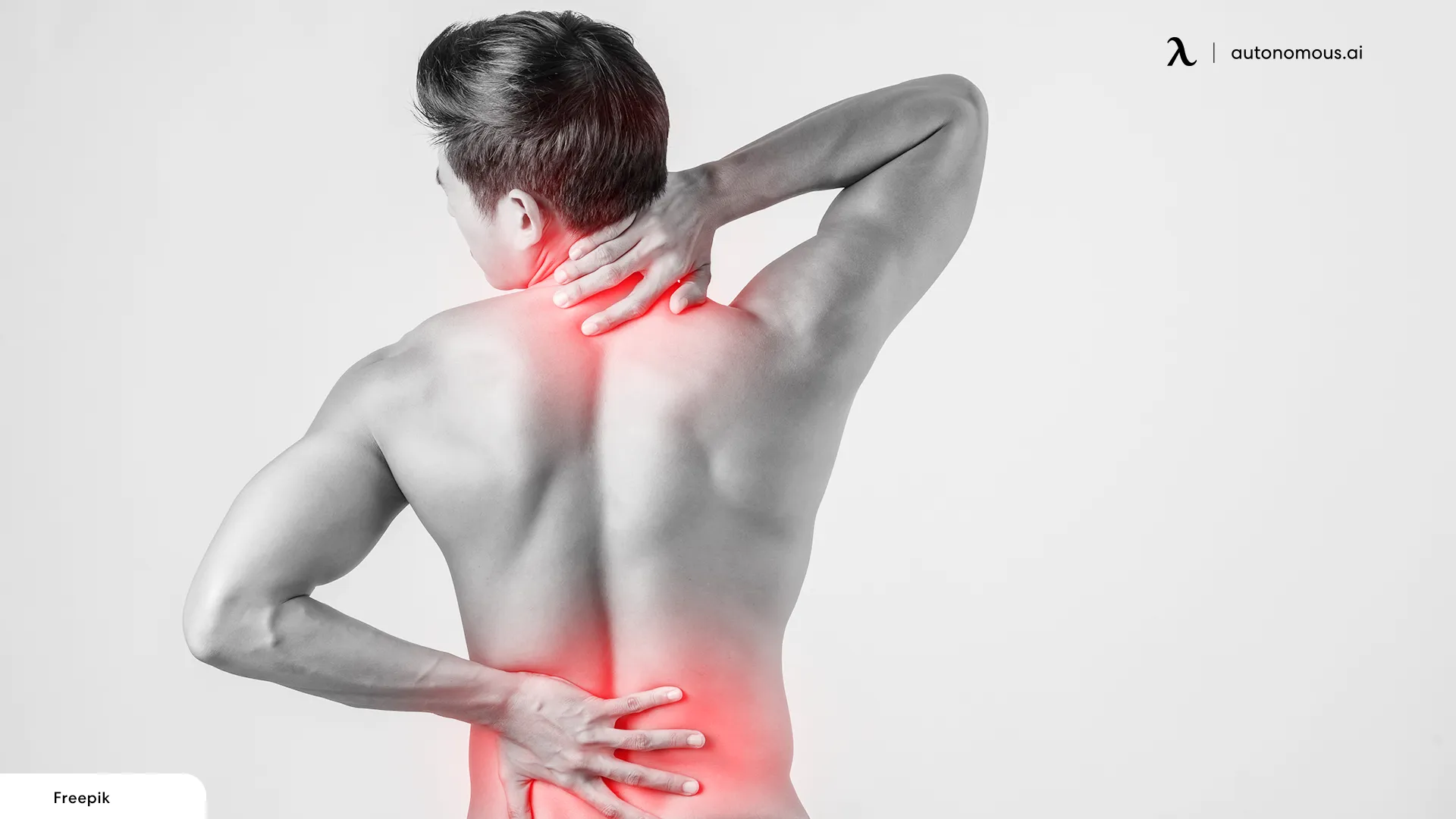
Tips on How to Sleep in Your Chair Comfortably
Are there any tips on the best way to sleep sitting up comfortably on an office chair all night? Try to focus most on the neck position, the hand position, the leg position, and the spine angle in a chair to sleep well. To be comfortable, they should be relaxed during sleep and free from further movement.
As you sleep, you should also support your feet and hands since unsupported feet and hands may reduce blood circulation. One tip is to take a break and sleep in your bed; however, if you are working from home and you have an actual bed to go to, this works once you know how to sleep sitting up comfortably! A full recliner chair for your office would be another suggestion.
Certain chairs are called 'full-recliners' because they have extendable footrests, backrests, and adjustable headrests. A neck pillow that supports your head and a footrest that supports your legs will give you the extra support you need if you don't have a sleep office chair that reclines.
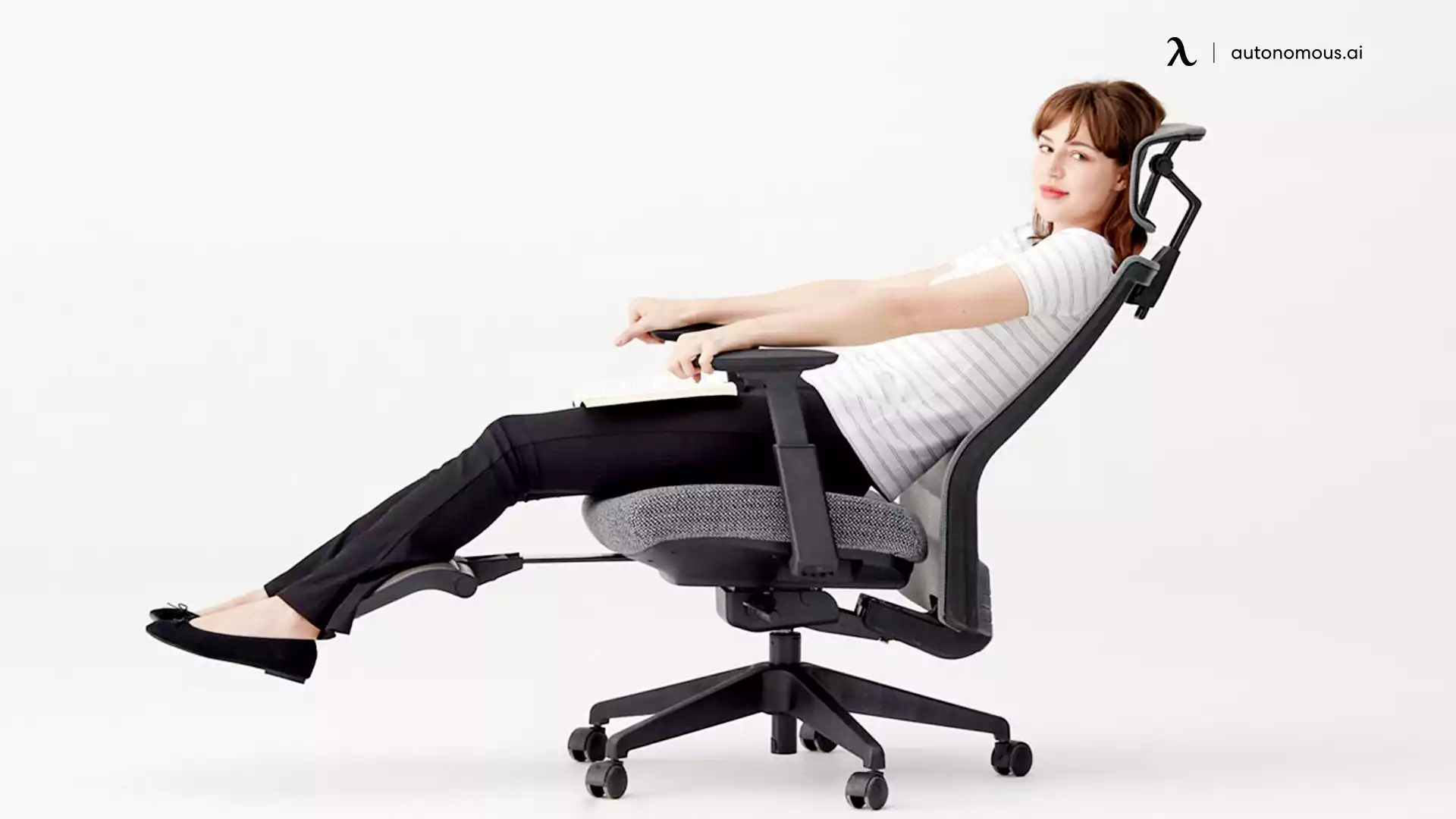
Choosing a Reclining Office Chair for Better Sleep
Sometimes, sleeping in a chair is unavoidable. Whether you’re on a long-haul flight, pulling an all-nighter at the office, or recovering from surgery, knowing how to sleep in a chair comfortably can make a huge difference. However, getting quality rest while sitting up can be tricky without the right setup.
If you find yourself needing to sleep in an office chair or any other upright seating arrangement, this guide will walk you through the best strategies for making it as comfortable as possible. From choosing the right chair to adjusting your posture and using extra support, we’ll cover everything you need to know.
If you often find yourself needing to sleep in an office chair, whether for quick naps or extended rest, choosing the right reclining ergonomic chair can make all the difference. Not all chairs are designed for comfortable sleep, so it’s important to consider specific features that maximize support, comfort, and adjustability.
Here’s what to look for when selecting the best reclining office chair for sleeping:
1. Adjustable Recline Mechanism
A good reclining office chair should allow you to lean back comfortably without straining your spine. Chairs that recline at least 40-50 degrees are ideal, but some models can fully recline to 135-155 degrees, almost mimicking a lounge chair or a zero-gravity position.
Why It Matters:
- Helps reduce pressure on the lower back.
- Allows the body to relax more naturally, mimicking a lying-down position.
- Prevents the head from drooping forward, which can cause neck strain.
Tip: Look for a reclining chair with lockable positions, so you can set the recline at an angle that works best for sleeping.
Best Option: The ErgoChair Ultra 2 features a smooth full-recline function with weight distribution technology, allowing you to lean back naturally for improved rest.
.jpg)
ErgoChair Ultra 2
| Dimensions (w/o headrest) | 28”L x 28”W x 41” - 46”H |
|---|---|
| Dimensions (with headrest) | 28”L x 28”W x 49” - 58”H |
| Seat dimensions | 18”L x 18”W |
| Seat depth range | 18” - 20.5” |
| Seat height | 18” - 23” |
| Headrest | 8" - 12" |
| Back dimensions | 20”W x 23”H |
| Tilt range | 25° |
| Armrest height | 7” - 11” |
| Armrest height (from the floor) | 23.5” - 27.7” |
| Caster wheel diameter | 2.56 inches |
| Number of caster wheels | 5 pieces |
| Materials | 100% TPE and polyester fabric upholstery with ABS plastic frame, aluminium base |
| Colors | Onyx Black, Dover Gray |
| Weight capacity | 320 lbs |
| Item weight | 36.5 lbs |
| Shipping dimensions | 28”L x 17”W x 31”H x 45 lbs |
| Assembly required | Yes |
| Warranty | 2 years |
| Free returns | 30 days |
| Adjustability | Headrest, armrest, back tilt angle and tension, seat height. |
2. Lumbar Support
Lower back pain is a common issue when sleeping in an upright position. A chair with adjustable lumbar support can help maintain the spine’s natural curvature, preventing slouching and discomfort.
Why It Matters:
- Provides extra support to the lower back.
- Reduces stress on the spine, which is crucial for long periods of sitting or sleeping.
- Helps improve posture, even when resting.
Tip: If your chair lacks built-in lumbar support, use a small pillow or rolled-up towel to support your lower back.
Best Option: The ErgoChair Pro is designed with flexible lumbar support, adapting to your posture to provide continuous lower back relief.

Autonomous ErgoChair Pro
| Dimensions | 29”L x 29”W x 46” - 50”H |
|---|---|
| Seat dimensions | 20”L x 20”W |
| Seat height | 18” - 20” |
| Back dimensions (w/o headrest) | 21”W x 22”H |
| Back dimensions (with headrest) | 21”W x 28” - 31”H |
| Tilt range | 22° |
| Armrest height | 11” - 14” |
| Armrest height (from the floor) | 26.7” - 32.2” |
| Caster wheel diameter | 2.36 inches |
| Number of caster wheels | 5 pieces |
| Materials | Polyester fabric with molded foam interior and durable nylon plastic frame; PU handrest pads. |
| Colors | Cool Gray, Evergreen, All Black Red Apple, Black & White, Baby Blue |
| Weight capacity | 300 lbs |
| Item weight | 48.5 lbs |
| Shipping dimensions | 29”L x 27”W x 19”H x 67 lbs |
| Assembly required | Yes |
| Warranty | 2 years |
| Free returns | 30 days The trial and return policy does NOT apply to products on sale. |
| Adjustability | Headrest, armrest, back tilt angle and tension, seat tilt and height. |
3. Comfortable Padding
Sitting or sleeping on a hard chair can quickly become uncomfortable. A well-padded seat and backrest provide the cushioning needed to prevent pressure points and discomfort.
Why It Matters:
- Prevents soreness from prolonged sitting.
- Distributes body weight evenly, reducing strain on the hips and thighs.
- Improves overall comfort, making it easier to fall asleep.
Tip: Memory foam padding is an excellent option as it contours to the body, providing customized support.
4. Headrest and Neck Support
One of the biggest challenges of sleeping in a chair is keeping your head from falling forward. A built-in headrest or adjustable neck support can help keep your head in a neutral position, reducing strain on the neck and shoulders.
Why It Matters:
- Prevents neck pain caused by awkward sleeping positions.
- Keeps the head properly aligned with the spine.
- Reduces the chances of waking up with stiffness or headaches.
Tip: If your chair doesn’t have a headrest, use a travel pillow or a rolled-up towel behind your neck for extra support.
If you're considering an upgrade, take a look at these good office chairs for neck pain that include built-in neck support designed for comfort, even during rest.
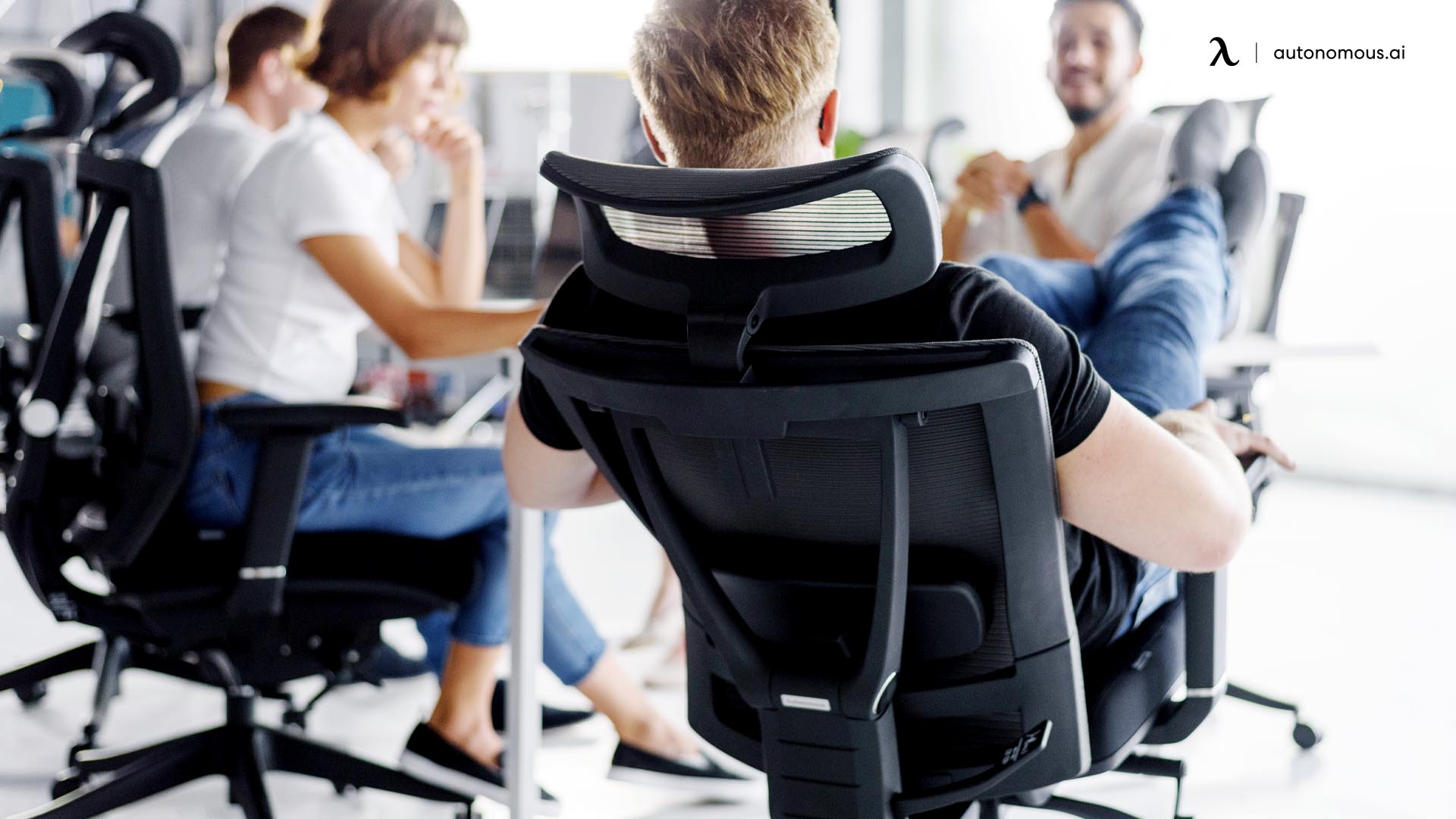
5. Sturdy Base and Wheels
An ergonomic chair should have a solid, stable base to prevent tipping over when leaning back. Additionally, smooth-rolling wheels allow easy movement without requiring too much effort.
Why It Matters:
- Ensures safety, especially when reclining at deep angles.
- Prevents unwanted movement while sleeping.
- Adds to the chair’s durability and longevity.
Tip: If your chair has wheels, lock them in place to prevent unexpected movement while you rest.
6. Breathable Material
Overheating can make it difficult to sleep comfortably in a chair. A breathable mesh back or ventilated fabric helps regulate temperature and prevents excessive sweating.
Why It Matters:
- Keeps you cool and comfortable, even during longer rest periods.
- Prevents the buildup of heat and moisture, reducing discomfort.
- Improves airflow, making it ideal for warm environments.
Tip: If your chair has leather or synthetic upholstery, consider using a breathable seat cover or a light blanket to prevent sweating.
Best Option: The ErgoChair Mesh is designed with a breathable, cooling mesh back, making it a great choice for warm environments.
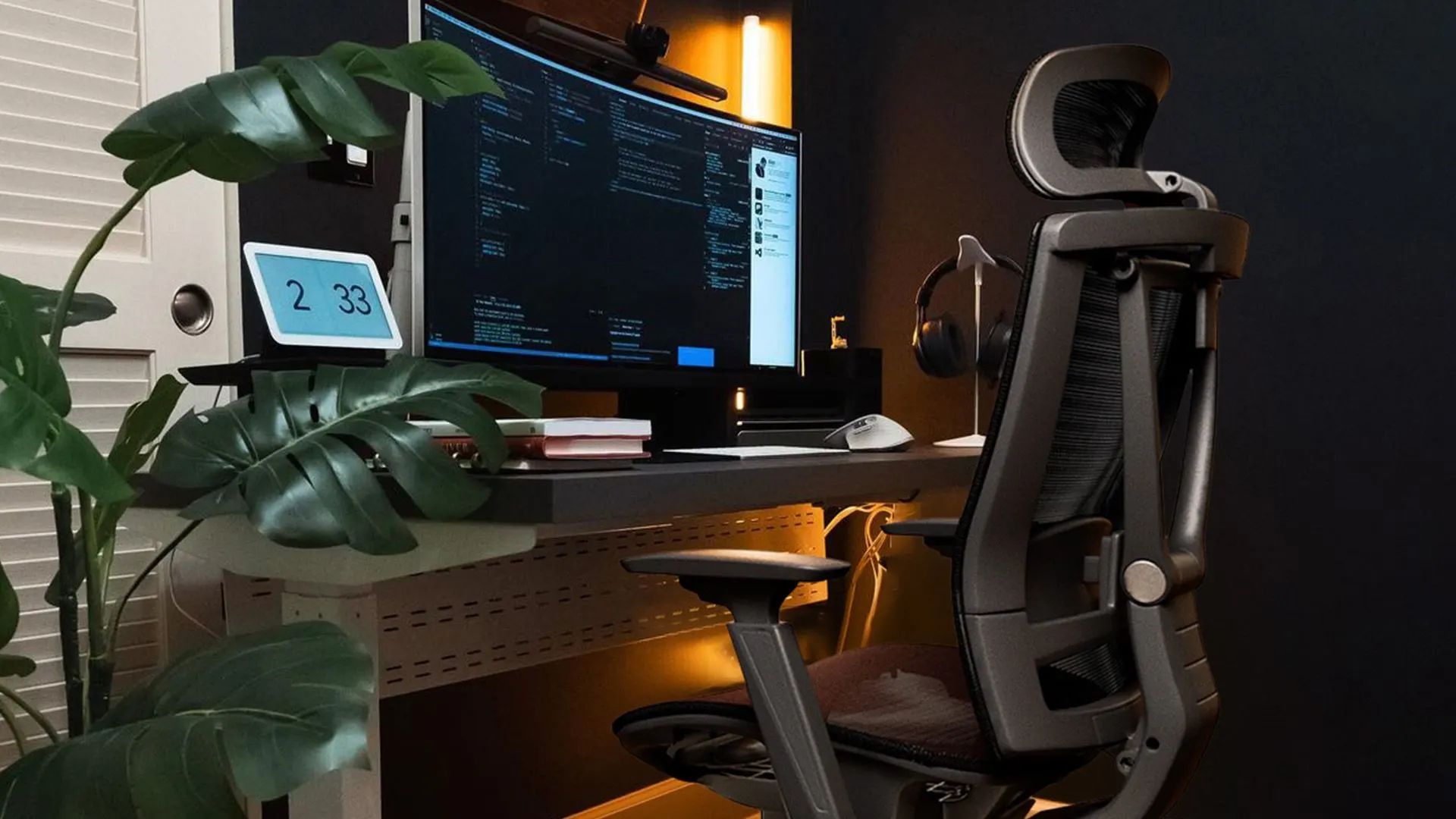
ErgoChair Mesh
| Dimensions | 28.5”L x 28.5”W x 45.5” - 52”H |
|---|---|
| Seat dimensions | 19”L x 19”W |
| Seat depth range | 18” - 20” |
| Seat height | 18.5” - 21.5” |
| Back dimensions (w/o headrest) | 21”W x 22”H |
| Back dimensions (with headrest) | 21”W x 28” - 31”H |
| Tilt range | 22° |
| Armrest height | 11” - 14” |
| Armrest height (from the floor) | 26.7” - 32.2” |
| Caster wheel diameter | 2.36 inches |
| Number of caster wheels | 5 pieces |
| Materials | Special German mesh (72% polyester, 28% polyamide) |
| Colors | Cool Gray, Black |
| Weight capacity | 300 lbs |
| Item weight | 48.5 lbs |
Additional Features to Consider
- Footrest Extension:
Some ergonomic office chairs come with extendable footrests, allowing you to stretch your legs and improve circulation while sleeping.
For those who want to maximize comfort and alleviate lower-body tension, incorporating a footrest can make a noticeable difference. For more information on how an office chair with a leg rest can improve comfort and health, check out this guide on the benefits of an office chair with leg rest.
- Armrest Adjustability:
Adjustable armrests help keep your arms relaxed and prevent shoulder strain while sleeping.
- Silent Recline Mechanism:
If you’re using the chair in a shared space, a quiet reclining mechanism prevents disruption to others.
Potential Downsides of Sleeping in a Chair
Sleep causes muscle tone to decrease. This means that every muscle in your body becomes flabby. In addition to being the most comfortable position for falling asleep, lying down ensures that your position will not change as your muscles become slack.
People who fall asleep sitting (with their muscles losing tone), if their bodies are not supported (by a backrest or a table), they are more likely to fall. Your body would still be placed in awkward positions due to gravity, leading to muscle soreness.
Sitting up and sleeping doesn't make much difference except that you'll sleep lighter because you'll feel as if you're losing balance every time you enter deeper sleep, which means you won't be properly rested, and sleeping won't provide any benefit.
Laying down is the best position for sleeping. The disadvantage of sleeping while sitting is that it won't do much harm if you aren't able to do so. The commuters consider it a good idea to nap occasionally to save up their energy reserves.
Most take their shoes off and elevate their feet if they can recline their seats. Nowadays, wearing shoes, you can remove them quickly when traveling is necessary. Remember that you should get up and move around whenever you sit at your desk for long periods so you do not develop blood clots. Fluids should also be consumed in large quantities.

Other Considerations for Sleeping in Your Chair
- Keeping your head raised will prevent neck strain if you sleep sideways (just make sure you use something as a pillow).
- Keep as far away as possible from resting on standard office or dining chairs that aren't ergonomic.
- Use a reclining chair that has a footrest and a headrest.
- Install a lumbar support pillow, neck pillow, and head rest if you don't have a reclining chair
- Set the alarm, so you don't oversleep!
FAQs
Does sitting up in a chair make you sleep worse?
The heart is negatively affected by sleeping in an ergonomic chair on a regular basis. The risk of blood clots in the heart increases for people who drive home from work and sit in a white ergonomic chair for hours. Blood pools up in your legs when you sit for a long time, which puts pressure on your heart because of the pressure on the arteries in your legs.
Can you tell me why I sleep better sitting up?
An additional benefit of sleeping in a recliner is improved digestion. You can twist and curl in your sleep when you're snoozing on a mattress or bed, which can affect digestion. Therefore, digestion operations are easy when your body is resting while slumbering on a fully reclined modern ergonomic chair.
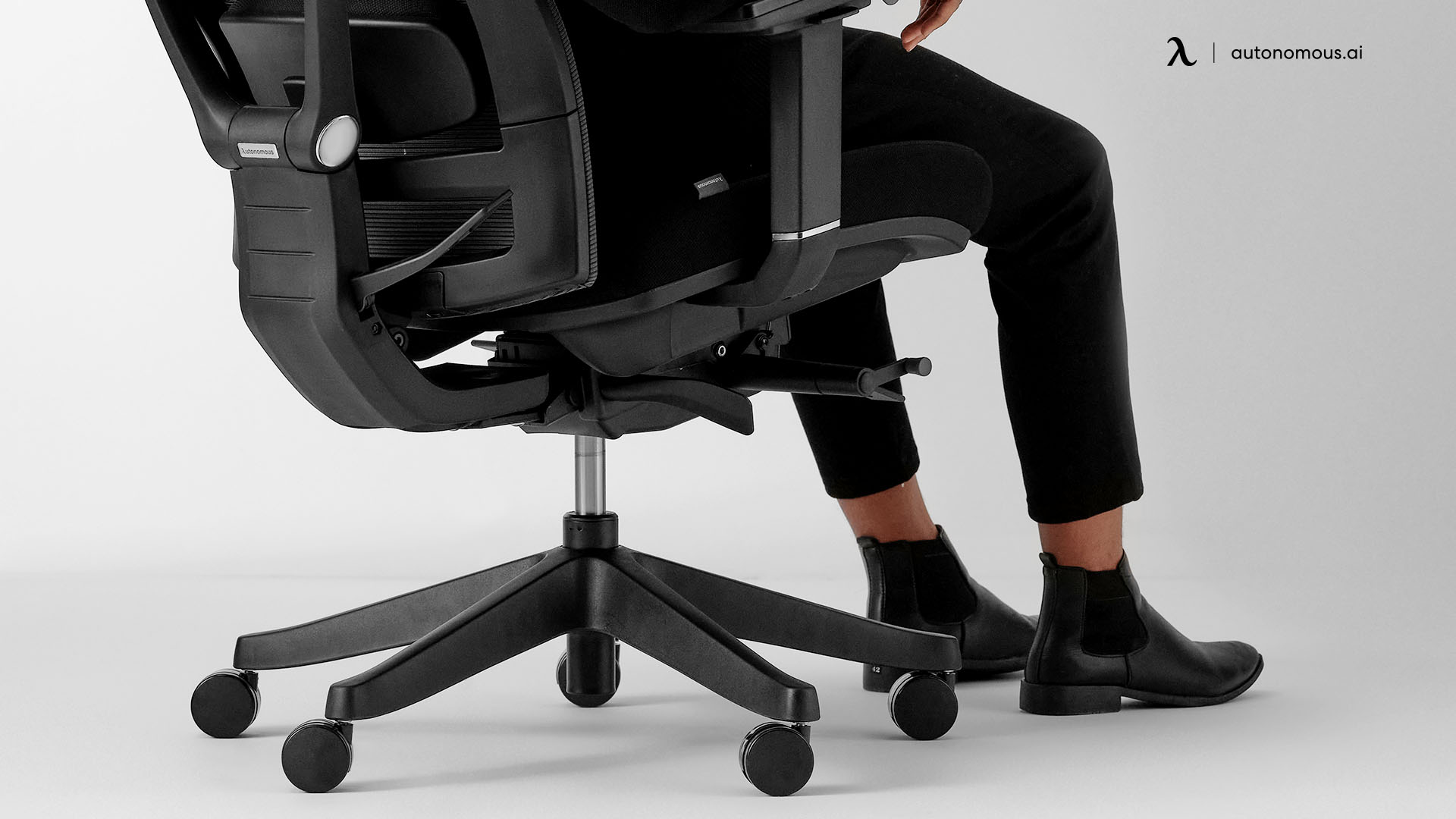
Final Thoughts
While sleeping on a chair isn’t ideal, it can be made more comfortable with the right adjustments. Whether you’re taking a quick power nap or need to sleep in an office chair overnight, focusing on proper posture, support, and relaxation techniques can improve your rest.
If you regularly need to sleep upright, investing in a reclining ergonomic chair with lumbar support and a headrest can make a world of difference. While a chair may never replace the comfort of a bed, knowing how to sleep comfortably in a chair can help you make the best of any situation.
Spread the word
.svg)


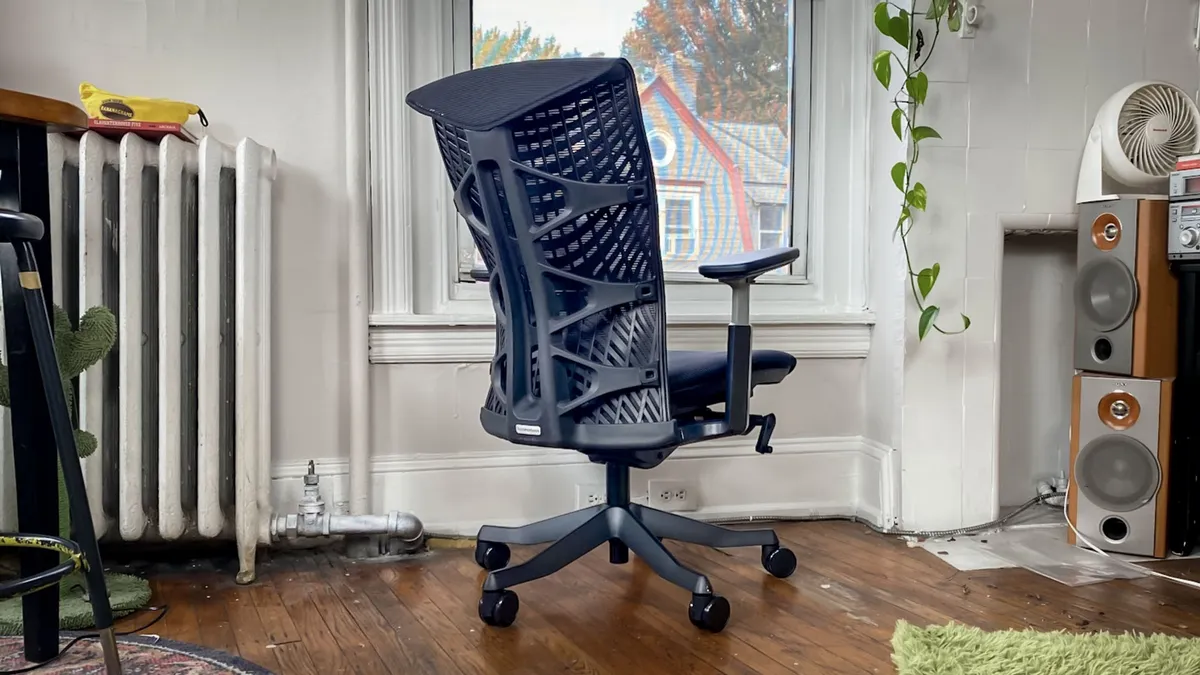
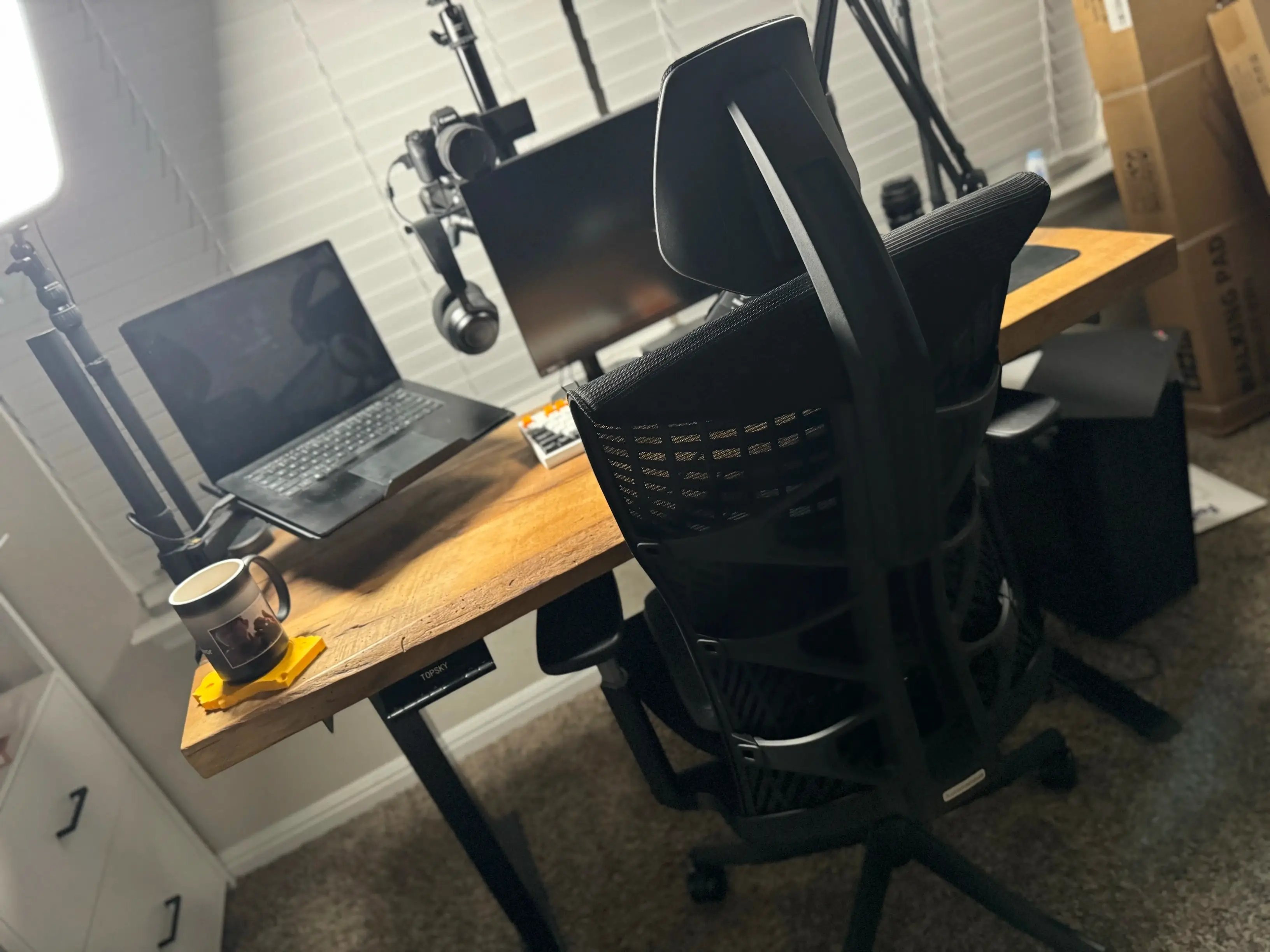

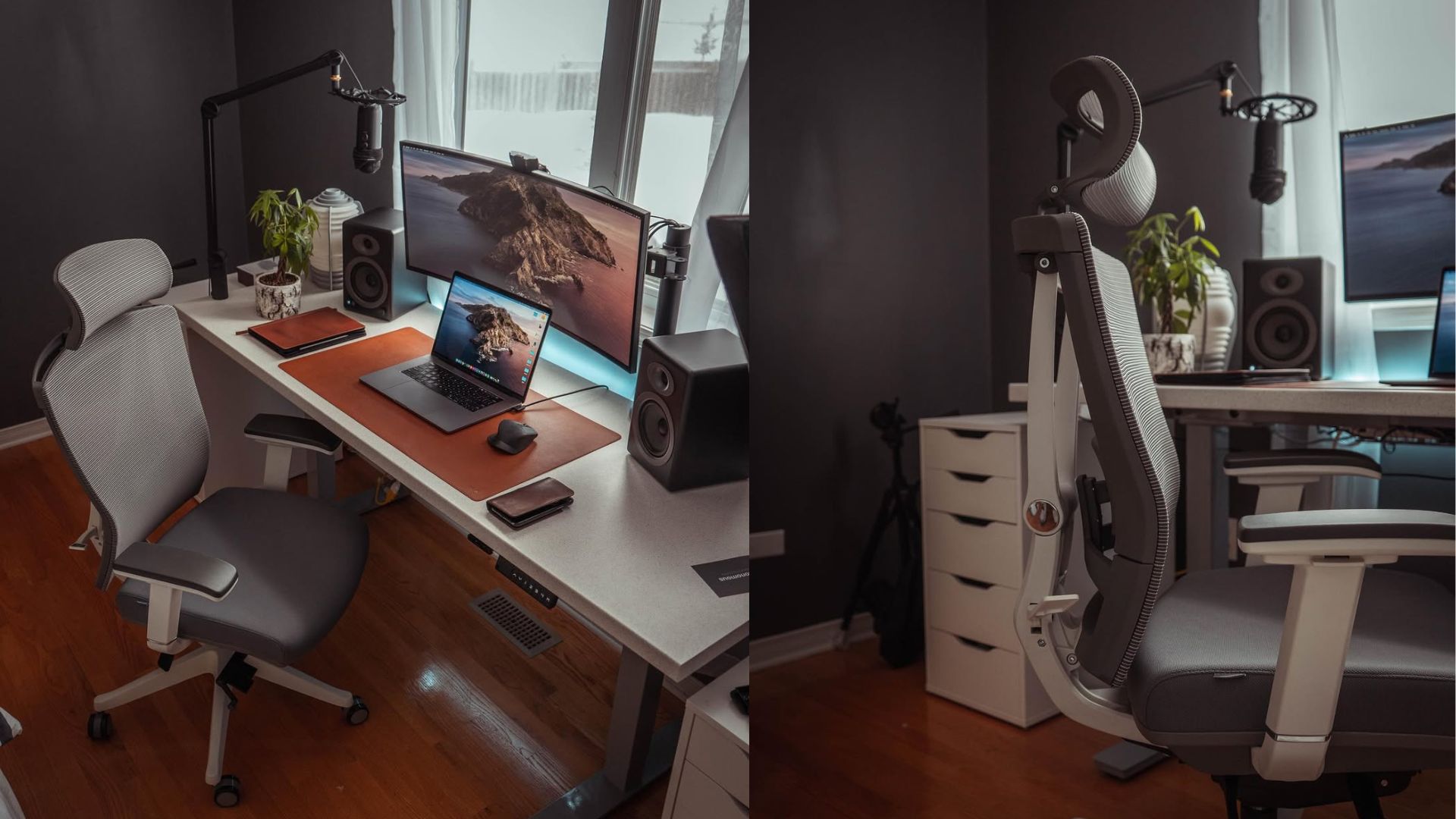
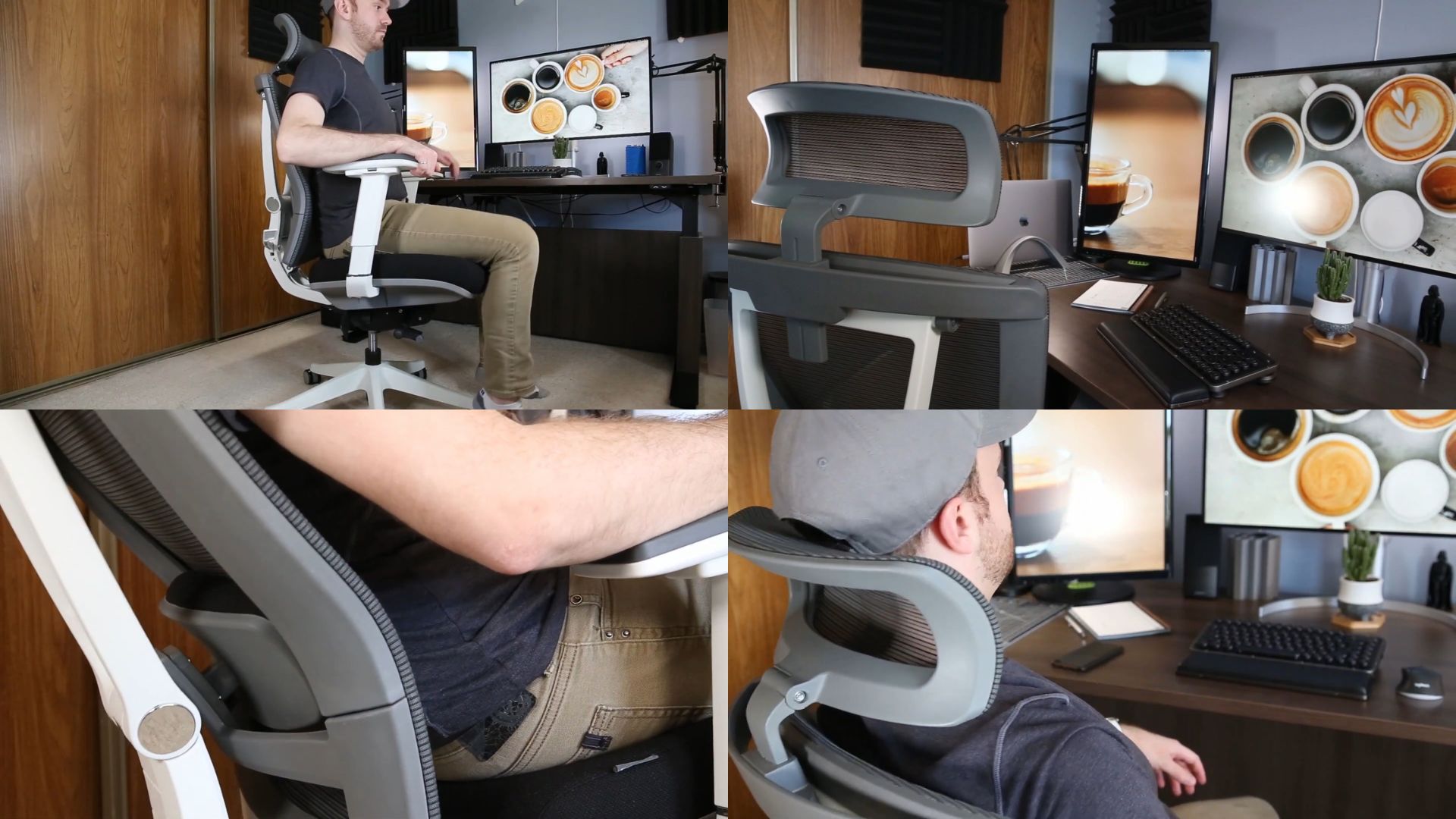
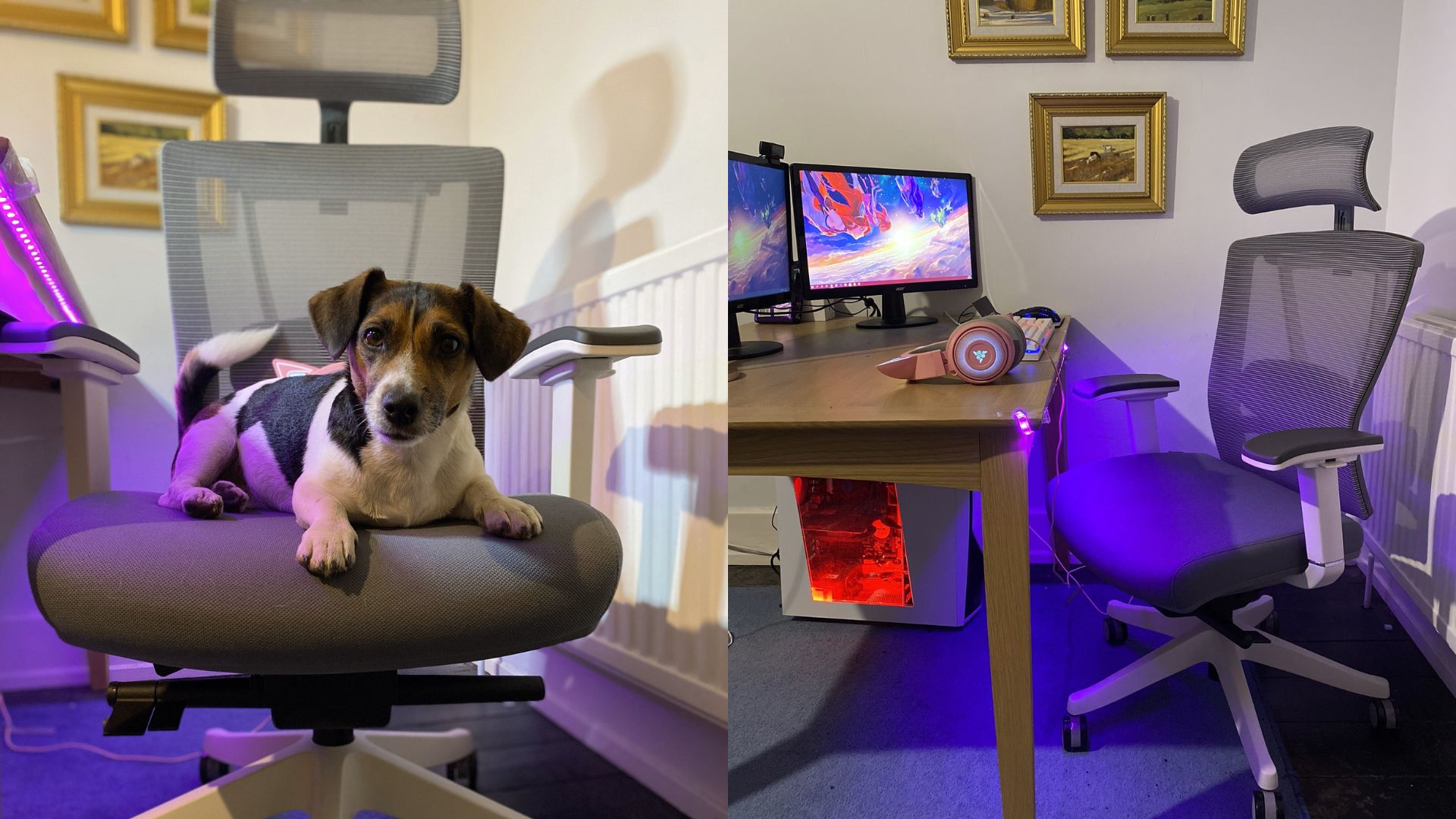
.jpg)
.jpg)
.jpg)






